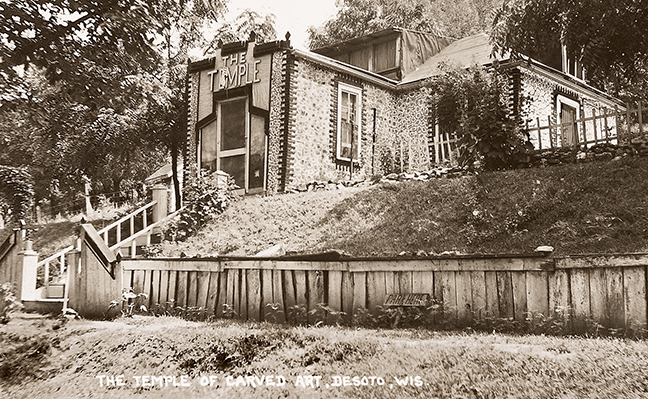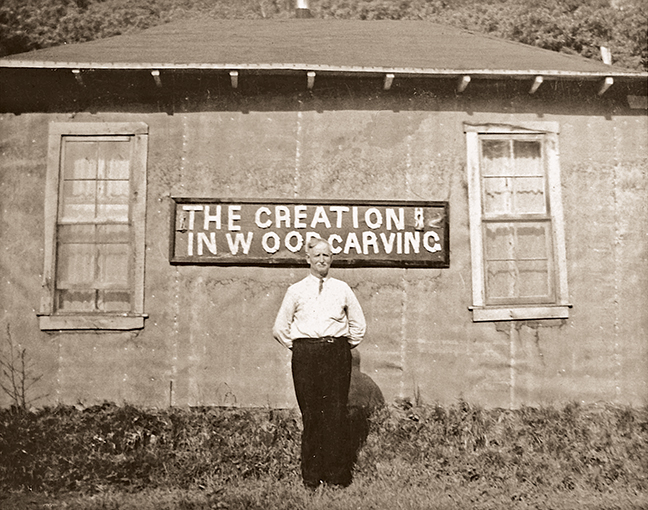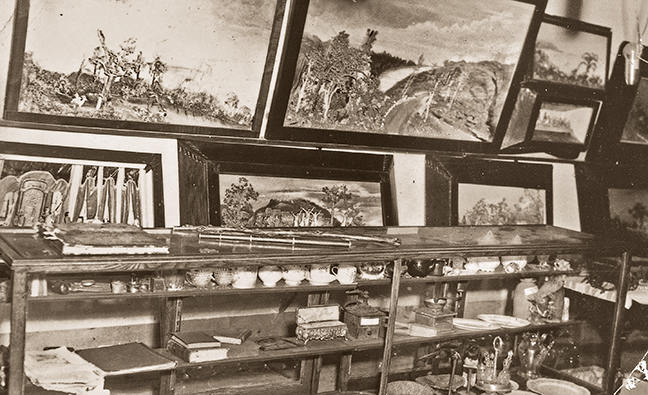Clarence Powell, Temple of Historical Carved Art, De Soto, WI



The Site
Clarence Powell’s Temple of Historical Carved Art in DeSoto, Wisconsin, housed his detailed dioramas depicting scenes from the life of Jesus and historic United States battles. Hung above eye level and set on tables and shelves scattered throughout a dimly-lit room, Powell wanted viewers to engage with his works as a narrative, moving from scene to scene. The dioramas are crudely constructed, held together at the corners by cut and scalloped coffee cans. He used readily available materials such as wire, cork, rope, painted cotton, bits of mirror, magazine clippings, commercial carpeting, dried plants and roots, cardboard, and bits of tin, and he covered the front faces in panes of glass.
The Arts Center’s twenty-nine dioramas and four paintings are all that are known to exist of Powell’s work.
Clarence Powell
1871–1945

Clarence Mosteller Powell was born in 1871 in Allamakee County, Iowa. Trained as a tailor, Powell began carving as a hobby after seeing French carvings in Florida while serving in the Spanish-American War in 1898. Around 1935, Powell moved to De Soto, Wisconsin, where he began constructing his Temple of Historical Carved Art to display his dioramas.
After Powell’s death in 1945, his mail carrier and friend, Charles McDowell, became steward of the collection. From time to time, McDowell displayed Powell’s carved works in public buildings and on his own property. In 1988 Kohler Foundation, Inc., acquired twenty-nine dioramas and four paintings by Powell from McDowell’s granddaughter and conserved them. The group of works was gifted to the John Michael Kohler Arts Center in 1992.




